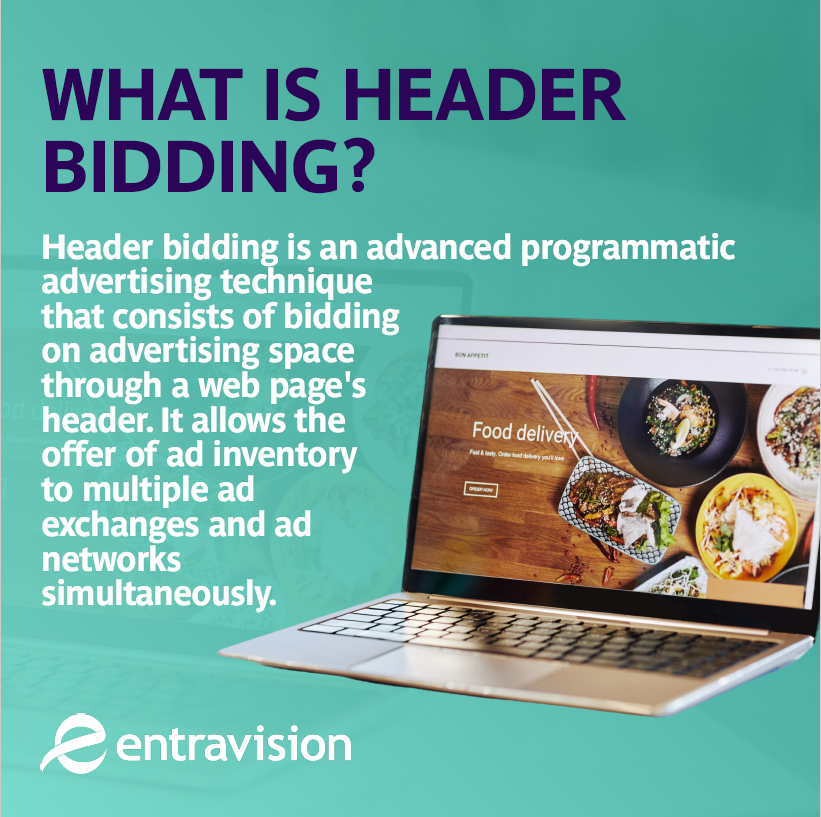Header Bidding: Maximizing Programmatic Advertising Revenue
In the world of programmatic advertising, staying ahead of the curve is essential for marketers and publishers alike. One technique that has gained significant traction and revolutionized the way ad inventory is bought and sold is header bidding.
This advanced advertising method allows publishers to unlock new revenue streams, provide transparency, and gain greater control over their ad spaces. In this blog post, we will delve into the intricacies of header bidding and explore its benefits.
What is Header Bidding?
Header bidding is a programmatic advertising technique that enables publishers to offer their ad inventory to multiple ad exchanges and networks simultaneously.
Traditionally, publishers would rely on a waterfall method, where ad networks would sequentially bid on their inventory. However, this method often resulted in suboptimal revenue and limited transparency.
Header bidding disrupts this sequential process by allowing advertisers to bid on ad space before the ad server is called, resulting in a more efficient and profitable auction.

How Does Header Bidding Work?
Let's take a closer look at the step-by-step process of header bidding:
1. User Enters the Website: When a user visits a website, the header bidding process is initiated.
2. Tag or Script in the Page Header: A tag or script embedded in the page header triggers the header bidding process. This tag redirects the user's information to one or more ad exchanges.
3. Connection with DSPs and SSPs: The ad exchanges are connected to Demand-Side Platforms (DSPs) and Supply-Side Platforms (SSPs). DSPs are responsible for facilitating the buying of ad space on behalf of advertisers, while SSPs help publishers manage and sell their ad inventory.
4. User Information and Bid Price: The SSPs send the user's information to the DSPs, along with the bid price for the available advertising spaces on the website.
5. Offers from DSPs: Based on the user's profile, the DSPs respond with their offers if the user's characteristics match the targeting criteria of the advertisers.
6. Determining the Winning Bid: The SSPs collect the offers from the DSPs and determine the final price of the winning bid. They then send this information to the ad server.
7. Ad Server Prioritization: Within the ad server, the priority of the ads is determined based on the configuration previously implemented by the publisher. This prioritization ensures that the most valuable ads are displayed to the users.
8. Ad Loading and User Experience: Finally, the winning ad is loaded onto the website, making it visible to the user. The entire process, from the user entering the website to the ad being displayed, occurs seamlessly and in real-time.
Benefits of Header Bidding:
Now that we understand how header bidding works, let's explore the benefits it offers:
1. Transparency:
Header bidding provides advertisers with direct access to publisher data, allowing them to make more informed decisions about their ad strategy. Advertisers can evaluate the performance and suitability of ad inventory, leading to more targeted and effective campaigns.
2. Increase in Revenue:
By offering ad inventory to multiple demand sources simultaneously, publishers can maximize their revenue potential. Header bidding exposes inventory to a larger pool of advertisers, increasing competition and driving up bid prices. This results in higher overall ad revenues for publishers.
3. Increased Control:
Publishers have greater control over the header bidding process. They can select which demand sources are eligible to participate in the auction, ensuring the quality and relevance of ads displayed on their websites. Publishers can also prioritize certain advertisers, offering them preferential treatment and potentially securing higher bids.
4. Improved User Experience:
Header bidding enhances the user experience by reducing latency. The real-time nature of header bidding ensures that the ad is loaded quickly, minimizing delays and creating a smoother browsing experience for users.
In conclusion, header bidding has transformed programmatic advertising by offering publishers increased control, transparency, and revenue opportunities. By enabling simultaneous bidding from multiple demand sources, publishers can unlock the full potential of their ad inventory and create a more efficient and profitable ad ecosystem. As the digital advertising landscape continues to evolve, embracing header bidding can give marketers and publishers a competitive edge in maximizing their programmatic advertising revenue.













